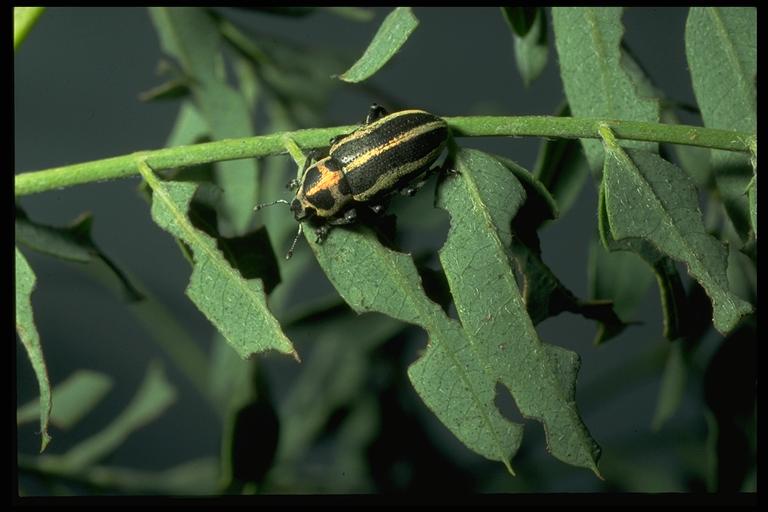
A “Sesbania clown weevil”, Eudiagogus sp. (Coleoptera: Curculionidae) Photo by Drees.
Common Name: “Sesbania clown weevil”
Scientific Name: Eudiagogus sp.
Order: Coleoptera
Description: These species represent members of a genus of broad-nosed weevils. Adults are about 5/16 inch long, and have slate-black bodies marked with a metallic rosy-white pattern. Markings on Eudiagogus pulcer appear as smooth-edged lines and rectangles, while those of E. rosenschoeldi are rough-edged and mottled. Although capable of flight at certain times of the year, adults collected from host plants rarely fly.
Life Cycle: Mated females lay eggs on the stems, lower plant surfaces and exposed roots of host plants. Eggs hatch in about 7 days. Larvae develop in the soil through five stages (instars) over a period of about 22 days before pupating in close proximity to the roots of the host plants. Adult weevils emerge from the pupae in about 7 days. Several generations occur annually. Females mate before entering their winter resting stage (diapause) and overwinter under the bark of trees.
Habitat and Food Source(s): Mouthparts are for chewing. In central Texas, these species occur on several species of Sesbania weeds (S. vesicaria, S. macrocarpa and S. drummondii), also called rattlepods, which are common along edges of lakes, ponds and streams. They have also been reported to feed on Cassia and Xanthoxylum species. Adults feed on leaflets, producing semicircular notches along the leaflet edges, and are common through the warmer months of the year (March through November). Larvae feed on the nitrogen-fixing root nodules of these legumes. This beetle is easy to locate on stems and leaves of Sesbania weeds. They can be kept alive for relatively long periods and will not bite when handled. Immature stages must be collected from the roots of the host plants by sifting through the soil.
Pest Status: These colorful weevils are common on Sesbania weeds where adults feed on leaves and larvae on root nodules; medically and economically harmless.
For additional information, contact your local Texas A&M AgriLife Extension Service agent or search for other state Extension offices.
Literature: Kovarik & Burke 1989.